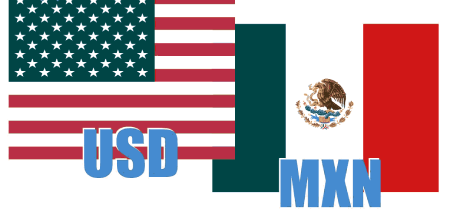
Mexican Peso Under Pressure from Weak Retail Sales and Carry Trade Concerns
Retail Sales Disappoint
Mexican retail sales contracted by a steeper-than-expected 3.9% year-over-year (YoY) in June, compared to a 0.3% YoY increase in May. This decline points towards a possible cooling of the Mexican economy, which could lead to lower inflation and influence the Banco de Mexico's (Banxico) monetary policy decisions.
Carry Trade Unwinding?
The Peso is also facing headwinds due to speculation surrounding the unwinding of the carry trade. This strategy involves borrowing in low-interest-rate currencies and investing in high-interest-rate currencies like the Peso. However, recent social media discussions suggest a potential decrease in carry trade activity, leading to reduced demand for the Peso. While the wide interest rate differential between Mexico and Japan (a common source of carry trade funding) might prevent a complete cessation, any decline in carry trade flows could negatively impact the Peso.
Technical Outlook
The USD/MXN currency pair is exhibiting a bearish trend within a rising channel. The recent bearish candlestick pattern and potential extension of the downward movement suggest the pair could reach the lower channel line and the 50-day Simple Moving Average (SMA) at 18.42. Although the long-term trend remains arguably bullish, the current correction could have further to go.
Other Factors to Consider
- Geopolitical Risks: Regional tensions in the Middle East could influence the Peso's value depending on risk appetite in the global market.
- Trump Factor: The decreasing possibility of former US President Donald Trump re-electing and imposing trade tariffs on Mexican goods provides some support for the Peso.
Overall, the Mexican Peso faces headwinds from weaker economic data, potential interest rate cuts, and carry trade concerns. While technical indicators suggest a possible further decline, the long-term outlook remains uncertain.
